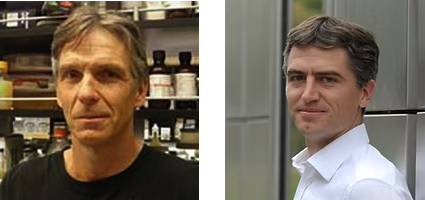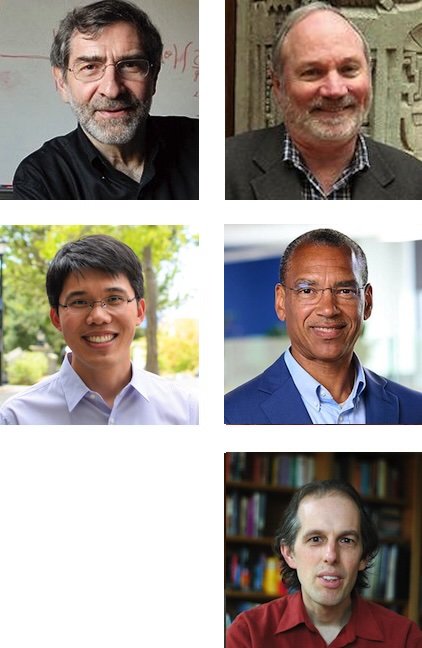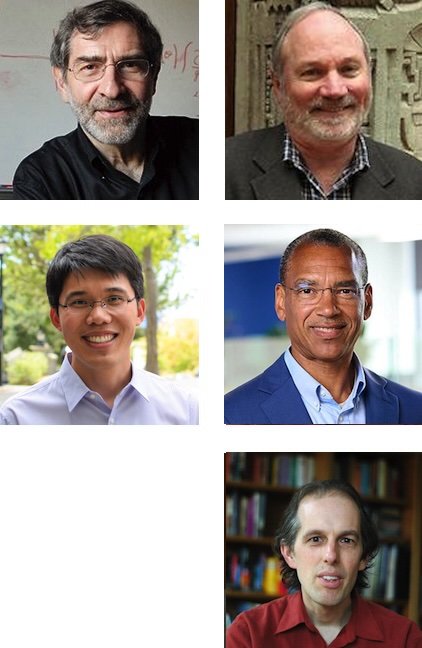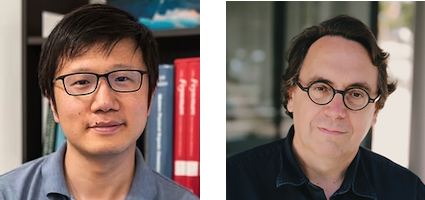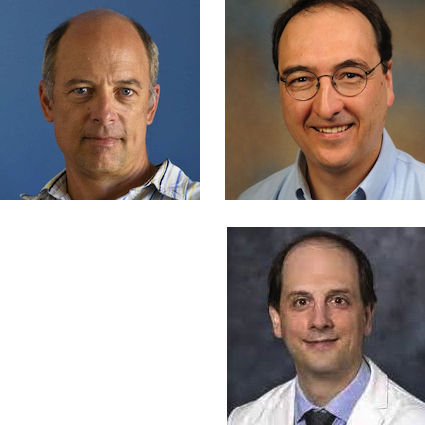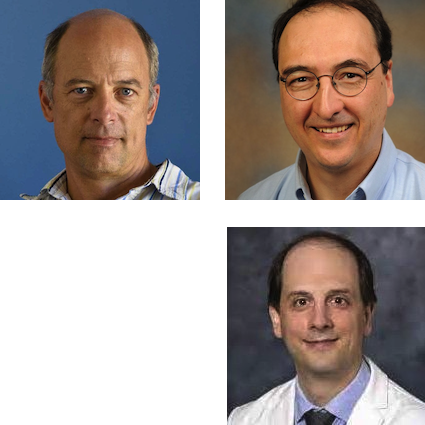2025 Research Grant Awards
DIRECTOR'S AWARD
Awarded to Professor Shinsuke Shimojo (BBE) and Professor Joseph Kirschvink (GPS)
Evidence for a Functional Human Magnetoreception Sense via Interactions with Visual Motion Perception
The goal of the project is to extend recent and compelling findings showing behavioral evidence that humans have a functioning magnetoreceptive system. The proposed follow-up study will start by building a psychometric function using the original visual motion perception task at various different visual coherence levels, and then systematically vary other visual and magnetic properties.
DIRECTOR'S & CENTER FOR MOLECULAR AND CELLULAR NEUROSCIENCE AWARD
Awarded to Professor Kai Zinn (BBE) and Professor Niles Pierce (BBE)
Compound probes for next-generation multiplex imaging of protein localization and colocalization in synapses
With existing protein imaging methods it is cumbersome to image more than three protein targets in the same sample. To overcome this issue, the researchers plan to develop a new compound probe concept that will allow 10 different proteins (or complexes of proteins) to be imaged simultaneously in Drosophila and mouse synapses with high sensitivity.
CENTER FOR MOLECULAR AND CELLULAR NEUROSCIENCE AWARD
Awarded to Professor Henry Lester (BBE), Professor Dennis A. Dougherty (CCE), Assistant Professor Wei Gao (EAS), Professor Stephen Mayo (BBE) and Research Professor Daniel Wagenaar (BBE)
A Wearable Continuous Nicotine Monitor Serves as a Human Brain-Machine Interface
This research will eventually result in a human brain-machine interface that also serves as a research instrument. A minimally invasive "continuous nicotine monitor" (CNM) will resolve the dynamic nicotine concentration, [nicotine]t, faced by high-sensitivity nicotinic acetylcholine receptors (nAChRs) in the cerebrospinal fluid during and after nicotine intake by individual subjects. The project will advance the preliminary data, using the expertise of several Caltech labs in nicotine addiction, nicotine pharmacology, hydrogel engineering, protein design, optical design, and integrated sensors.
T&C CHEN CENTER FOR SYSTEMS NEUROSCIENCE AWARDS
Awarded to Assistant Professor Zhen Chen (BBE) and Research Professor Carlos Lois (BBE)
The structural basis of synaptic transmission
Key molecular events during synaptic transmission have yet to be understood at sub-protein level, such as the vesicle recycling process after neurotransmitter release. This project will develop a brain tissue-cryoET workflow to directly visualize the molecular assemblies in the D. Melanogaster synapses synchronized by a Shi(ts) mutation, revealing the conformations and interactions of proteins critical for vesicle recycling.
Awarded to Professor Michael Dickinson (BBE)
The role of mechanosensory feedback in updating internal compass direction
This project will use multi-level, innovative approaches to test a novel hypothesis that accurate estimates of self-rotation are necessary in moving animals to systematically gather information when they rapidly change direction, thus allowing them to compute important parameters such as wind direction, wind speed and ground speed that they cannot directly measure.
Awarded to Professor Matilde Marcolli (PMA)
Mathematical models of language and realization in neural circuits
Recent work of Marcolli (in collaboration with Chomsky and Berwick) developed a mathematical model of the fundamental computational structure underlying syntax formation in human language. A long standing question is the identification of a neuroscience realization of the generative process of language. While this question has been extensively investigated over the years, the lack of a good mathematical model of structure formation in language impeded the possibility of quantitatively analyzing its realizability in terms of neural circuits. Marcolli intends to approach this question employing the newly available mathematical model.
Awarded to Professor Markus Meister (BBE), Professor Richard Murray (BBE & EAS) and Faculty Associate Ueli Rutihauser (BBE)
Human brain control of dynamic task sequences
Complex human behavior - such as driving a car - involves the flexible sequencing of many brief tasks in order to achieve a goal. The researchers aim to understand how the brain coordinates and controls such a sequence of "microtasks". They will take a cross-disciplinary approach, combining: (1) brain signal recording in human subjects driving a virtual car, at single-neuron resolution; (2) control theory as a framework to phrase hypotheses about the dynamic control of complex behaviors; (3) computational neuroscience as a link between the theory and the experimental observations. In the long run the researchers hope this will illuminate the neural basis of complex voluntary behavior.
T&C CHEN BRAIN-MACHINE INTERFACE CENTER AWARDS
Awarded to Professor Anima Anandkumar (EAS)
Disentangling Behavioral Attributes from Natural Behavioral Data for Robust BMI
This project aims to improve brain-machine interface (BMI) decoding by disentangling sensorimotor neural signals into behaviorally relevant and confounding variables in natural behavioral experiments. Anandkumar proposes a data-driven model that decomposes neural features, ensuring only task-relevant signals contribute to decoding. Leveraging advanced deep learning techniques, including Fourier neural operators and contrastive representation learning, this approach enhances BMI robustness. Ultimately, this framework can also serve as a tool to study the complex modulation of neural activity.
Awarded to Professor Yisong Yue (EAS)
Towards Foundation Models for Neural Signal Decoding
Yue proposes to develop large machine-learned models for reliable general neural signal decoding. Although much progress has been made on scaling pretraining with self-supervised learning across subjects and sessions, major distribution shifts between datasets prevent these models from being useful to new data. Yue proposes to combat this with new benchmarks, pretraining on multiple large datasets, and studying how incorporating additional supervised pretraining tasks when available can benefit generalizability.


